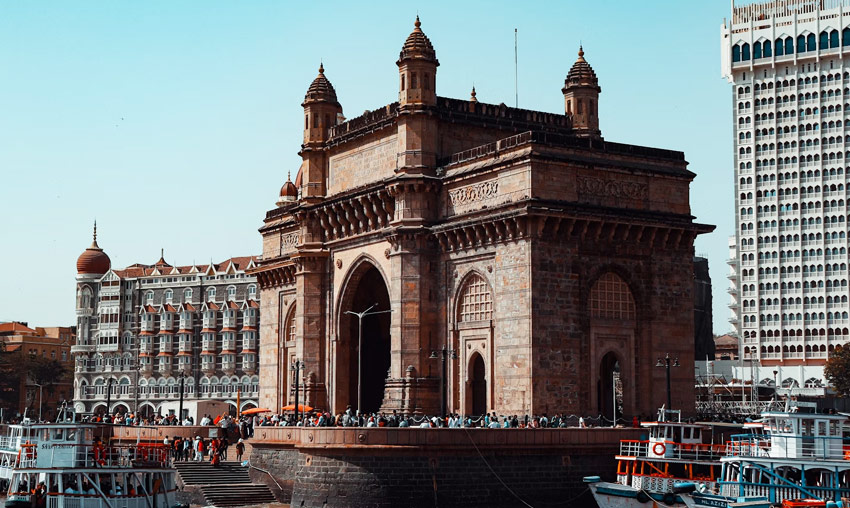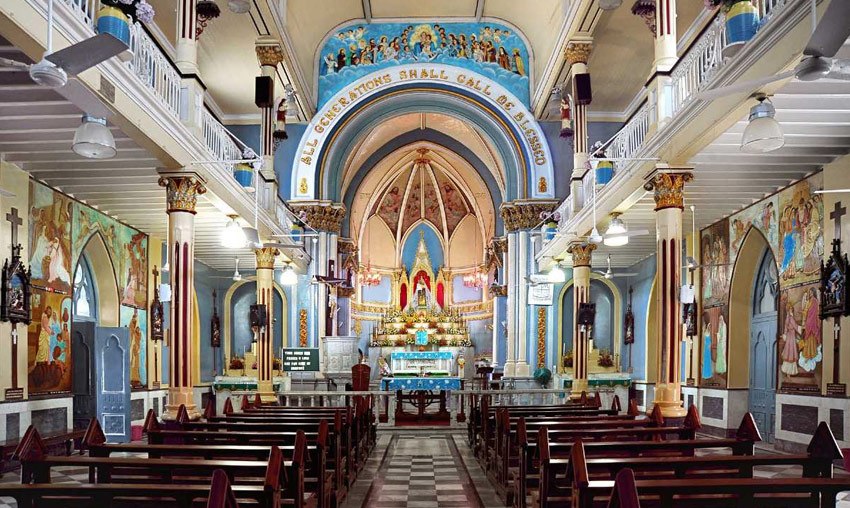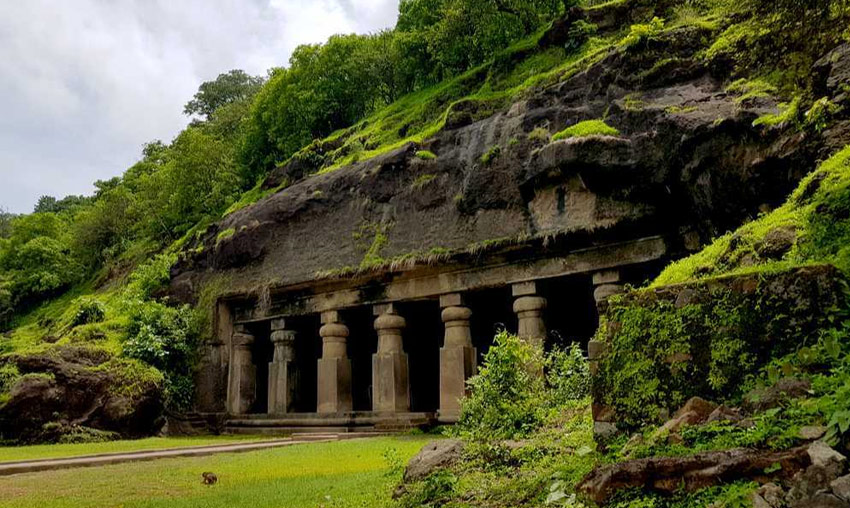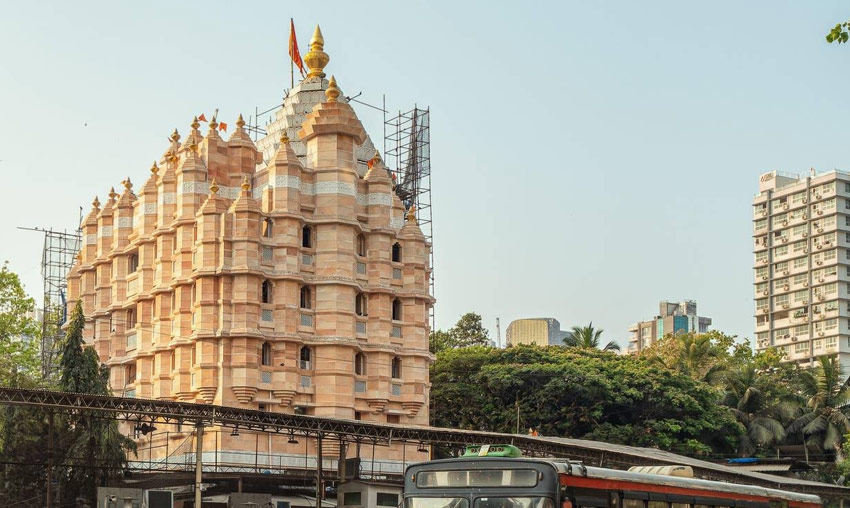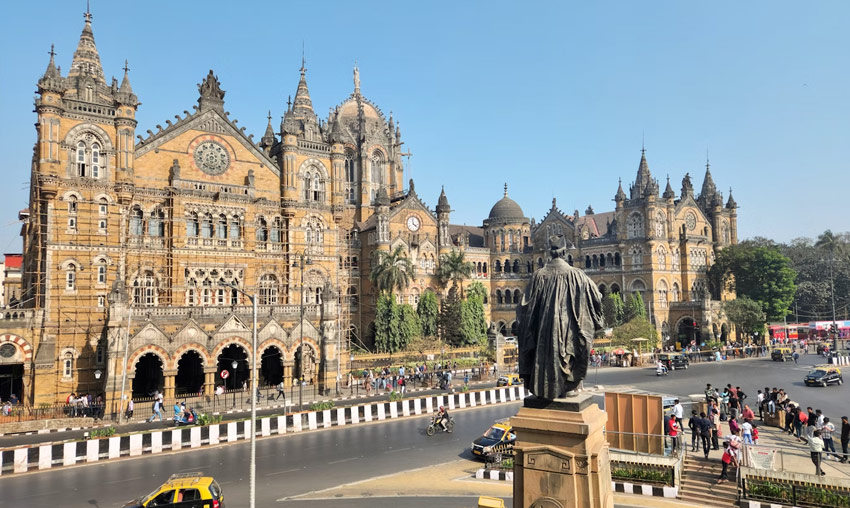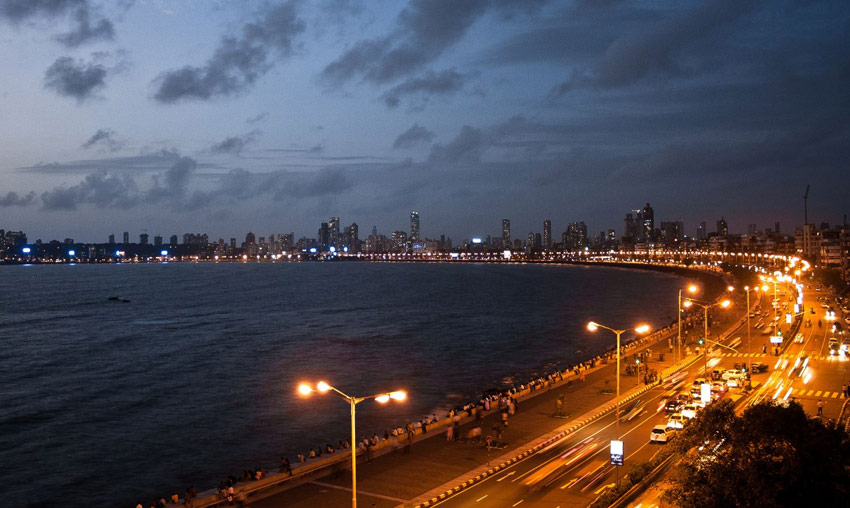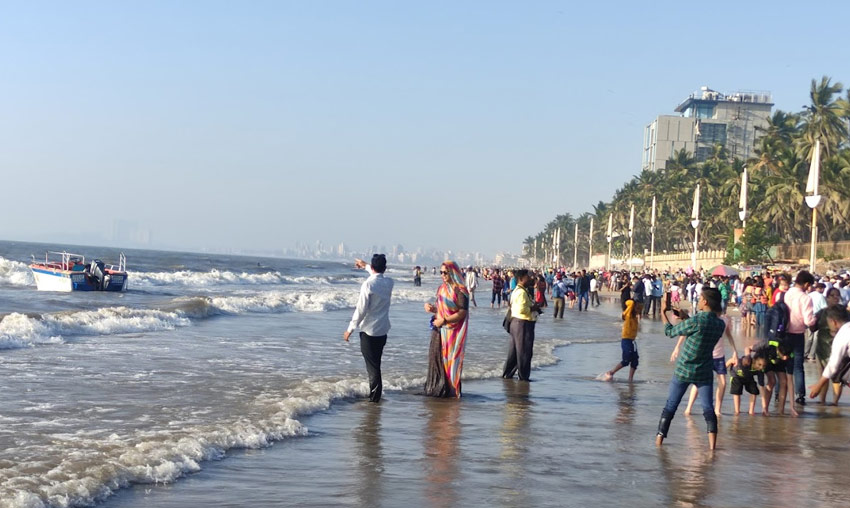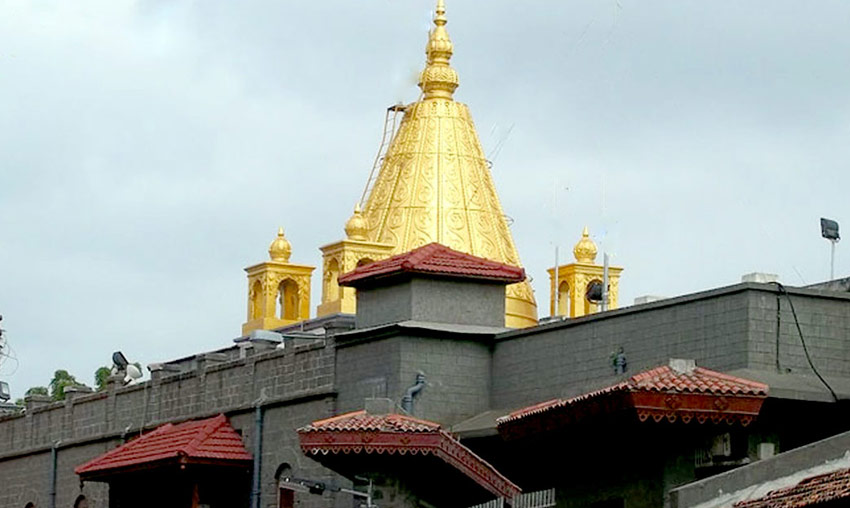Without a question, one of Mumbai’s most visited tourist destinations is the Gateway of India. It looks out over the Arabian Sea from its lofty position atop the Apollo Bunder. Constructed in 1924, it is one among the city of Mumbai’s defining monuments. The renowned architect George Wittet started the project to honour King George V and Queen Mary’s visit to Mumbai. A major tourist destination in the city, the monument’s massive edifice is a stunning fusion of Arabic, Indian, and Western architecture. Additionally, it serves as the launchpad for several ferry services that travel to the ancient Elephanta Caves.
Known as “Mumbai’s Taj Mahal,” the landmark was dedicated 13 years later in 1924 after the foundation was constructed in 1911. The building itself is composed of solid concrete and yellow basalt, and it is adorned with a variety of Hindu and Muslim designs. Prior to independence, the Gateway’s basalt arch provided entry and exit points to India via waterways, and it was from this arch that the final British ship sailed from India to England. Additionally, monuments of Chhatrapati Shivaji and Swami Vivekananda have been erected close to the Gateway. The Gateway complex’s seaside vista is particularly lovely and dreamy at night. The Gateway of India is thus, not only a historic artefact but an example of marvellous architecture in itself!
History of Gateway of India, Mumbai
A jetty that was mostly utilised by the local fishing community originally occupied the space where the Gateway now stands. Recognising its potential as a landing spot, it was refurbished to accommodate British governors as a pier. Soon after, it was determined that a magnificent gateway would be constructed here to greet King George V and Queen Mary to Mumbai. Sir George Sydenham Clarke, the governor of Bombay, lay the foundation for the gateway on March 31, 1913. But George Wittet didn’t approve the Gateway’s final design until March 31, 1914. The constructions formally began in 1920 and it took almost four years to complete the construction of the monument. On 4 December 1924, the Gateway of India was inaugurated by the Viceroy, the Earl of Reading.
Design and Structure of Gateway of India, Mumbai
Scottish architect George Wittet created the Gateway of India, which was constructed in the Indo-Saracenic style. The 26-meter-tall Roman triumphal arch is part of the design, which also incorporates elements of Muslim and Hindu architecture. The concrete and yellow basalt used in its construction came from local sources. Two spacious passageways that can hold up to 600 people are located on either side of the arch. However, the gateway’s central dome, which has an apex of 83 feet and a diameter of 48 feet, is modelled after Muslim architecture. Additionally, the doorway features painstakingly crafted honeycomb structures that support four spires, giving the exterior a distinctive symmetry. Steps behind the archway give an expansive view of the Arabian Sea as well.
Ferry Timings & Ticket Price at Gateway of India, Mumbai
Ferry rides, which allow visitors to see this monument from the sea, are one of the singular experiences available at the Gateway. These are quick recreational boat tours that take you to all the local sights. The Gateway of India is the beginning and finishing location for the first boat from here, which departs at 9 a.m. and costs between INR 55 and INR 110 per person. There are also several ferry excursions to other well-known locations, like Alibaug and Elephanta Caves:
1. Elephanta Caves
Departure of the first boat: 9:00 a.m. after which regular boats are available every thirty minutes.
Departure of the last boat: 2.30 p.m.
Charges per head: INR 120.00 per person, INR 10 extra for going to the top of the ferry deck
2. Alibaug
A number of operators provide this service and are detailed as follows:-
i. PNP
Departure timings: 8:10, 10:10, 12:10, 14:10, 16:10, 18:30
Charges per head: INR 150
ii. Ajanta
Departure timings: 6:15, 7:15, 9:15, 10:00, 11:00, 12:30, 14:00, 15:00, 16:00, 17:00, 17:30
Charges per head: INR 85 (Main Deck)
iii. Maldar
Departure timings: 8:45, 11:45, 13:45, 15:45, 16:00
Charges per head: INR 135 (Main Deck), INR 135 (Upper Deck)
How To Reach Gateway of India
Near the city’s southernmost point is the Gateway of India. Most of South Mumbai is easily accessible by bus or taxi. It takes a lot more work to get here from the suburbs, therefore it’s best to combine it with other South Mumbai attractions.
Timings : Throughout the day
Time Required : 1- 2 hours
Entry Fee : Free
